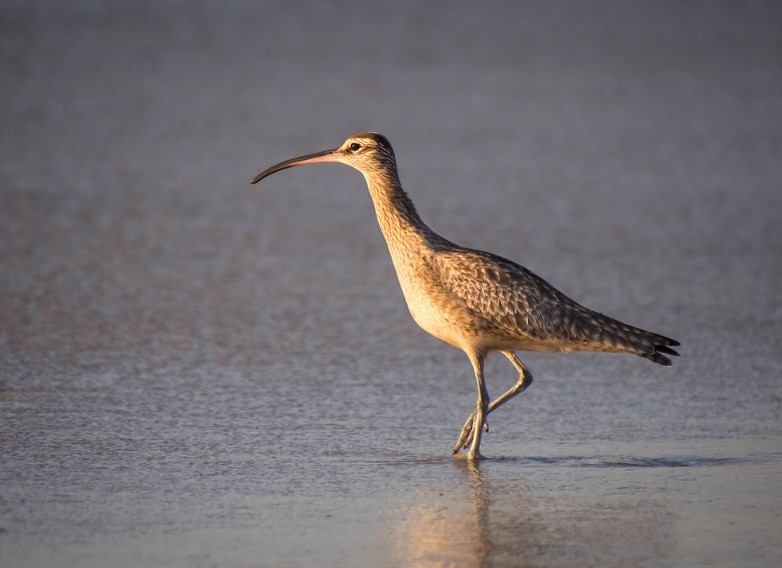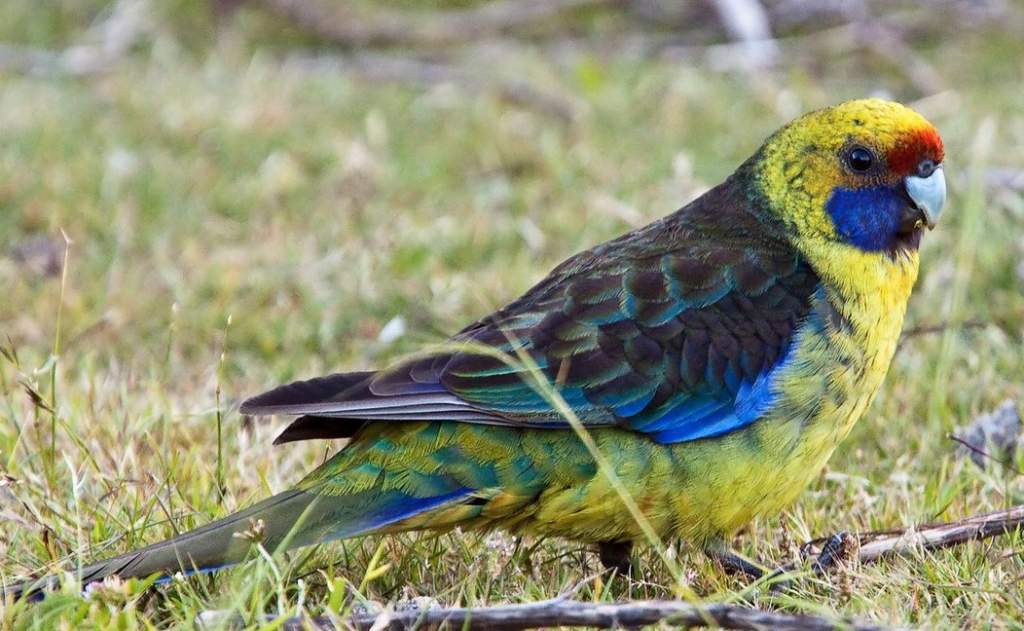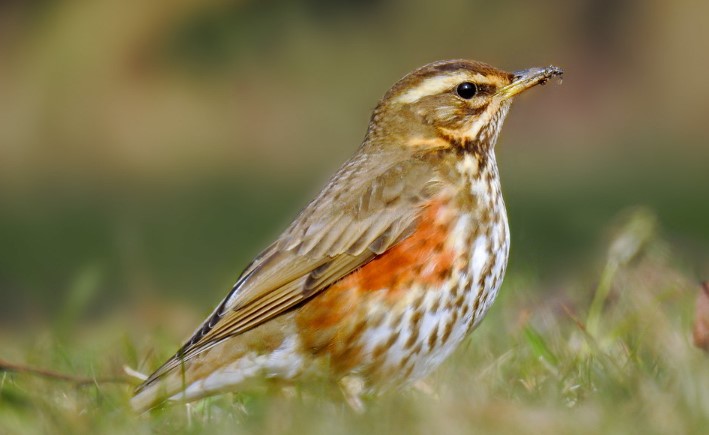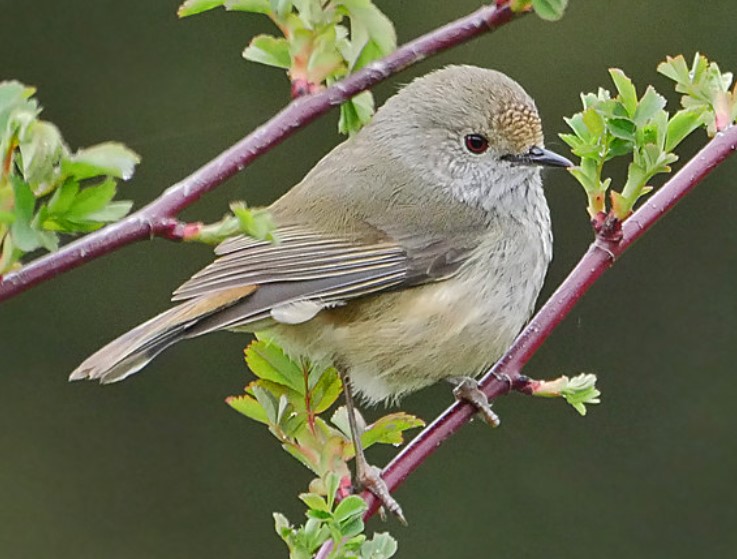Rare on Australian Southern coasts, the Whimbrel is more abundant around the north, where it sometimes occurs in small flocks of up to 50. It is a non-breeding migrant arriving for the austral summer in late August and early September. The species breeds in tundras inside the Arctic Circle. The birds come in a broad wave, from the northwest coast to Cape York, some flying over glacial mountains in New Guinea.
On their journey south they visit berry and rice fields and lakes throughout eastern Asia and fly to beaches to rest. When returning to breed, in late April-May, they tend to stick to the pebbly or sandy shores of the Asian coast.
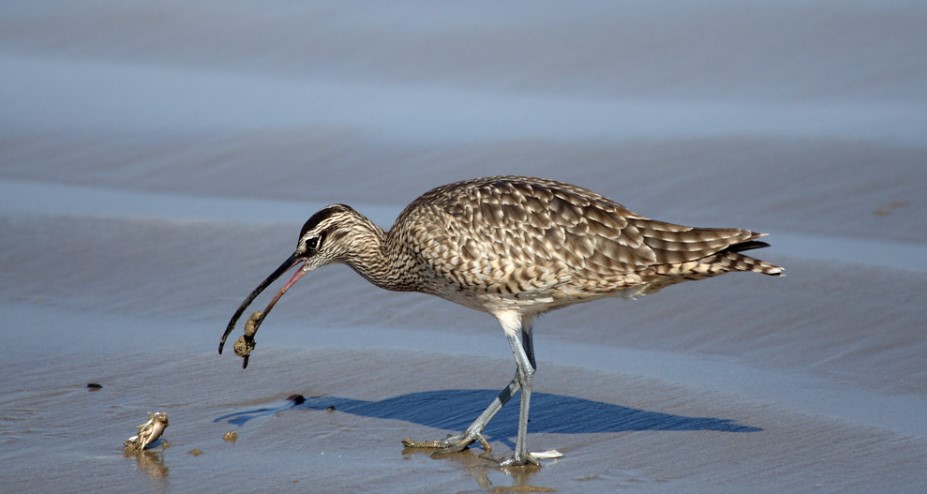
A few-mainly immatures-stay behind especially in northern Australia. In Australia, Whimbrels frequent estuaries and mangrove mud flats along the coast, feeding there and roosting on islets, coral reefs, and meadows nearby. They forage by probing for worms or molluscs in mud or sand and picking up crustaceans and insects among rocks, coral, and seaweed.
They may also eat vegetables, and matter particularly seeds and fruits. Whimbrels have a light and fast flight. Carrying the head up, they rise without a run, turn in tight circles, and land with a quick flutter. The Whimbrel looks similar to the Eastern Curlew, but it is smaller with a pair of dusky stripes on its crown.
The average size of a Whimbrel is approximately 400-430 mm. Both sexes are similar. All upper parts mid-brown, finely streaked on head and neck with pair of duskier stripes on the crown, mottled on back, wings, and tail; rump white with brown bars. Throat and breast streaked brown; rest of underparts white barred brown on flanks. Eyes are black-brown. Moreover, the bill is down-curved and dark brown in color. The legs and feet are olive-grey. Whimbrel voice is shrill, tittering ti-ti-ti-ti-ti in alarm.
